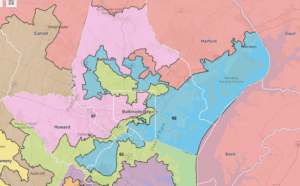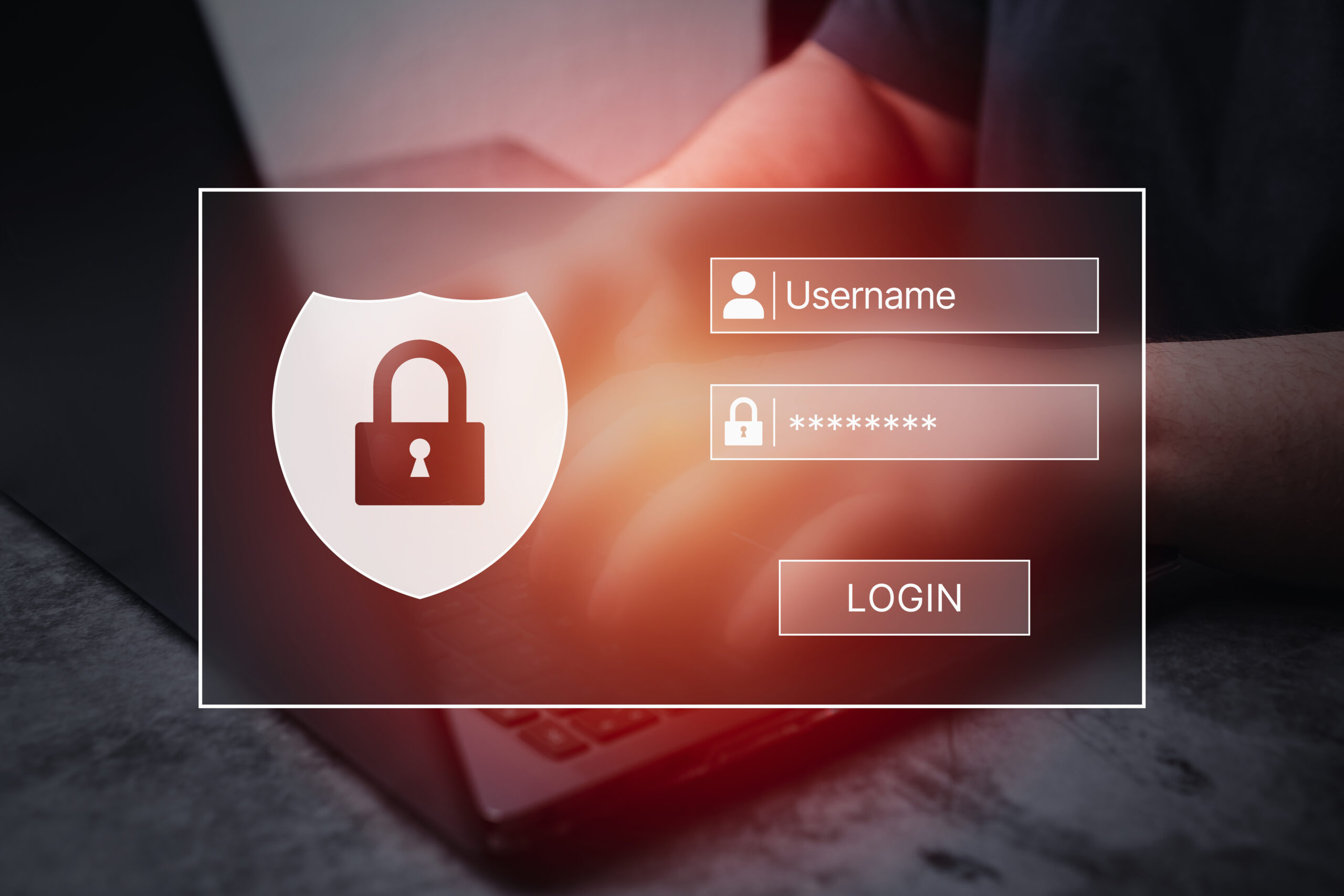Prepping – The Book List
There are a zillion books out there on various aspects of prepping, and I can’t recommend them ALL. But these are some I consider to be truly important, or they’re ones that have been recommended highly by others. I’m going to stick stuff in categories to help make it easier to look through.
SELF-SUFFICIENCY
- The Perfect Bug Out Bag
- Emergency Food Storage and Survival Guide
- Best Guide to Disaster Readiness
- SAS Survival Handbook
- The Self Sufficient Life and How to Live It
MED/FIRST AID
- SpecOps Forces Medical Handbook
- Where There is no Doctor
- PDR for Herbal Medicine
- Medicinal Plants of North America
- A Book for Midwives
- The Survival Medicine Handbook (TY Tom!)
SECURITY/SELF-DEFENSE
GENERAL SKILLS
- Encyclopedia of Country Living
- Basic Butchering of Livestock
- Shelters, Shacks, and Shanties
- Wildwood Wisdom
- No-Grid Survival Projects
- The Way Things Work (TY CBMTTek!)
- 98.6 Degrees: The Art of Keeping Your Ass Alive (TY Tom!)
CRAFTING/DIY
- The Barefoot Architect
- The Off-Grid Living Bible
- Make, Sew, and Mend
- How to Build a Moonshine Still
- Footwear Pattern Making
- How to Build Wind Turbine (etc)
- Wind Mills and Wind Motors
- Homemade Contrivances
FICTION
Friday Feedback
Ceph For The Win?
One of my Ceph nodes had started acting up. It would stop responding, and I could get no network traffic to it.
It is a truly headless server. My only input was the power button. Which sometimes worked and sometimes didn’t.
After the third time the node went offline, I put a monitor on the node and got to see it die.
It limped along for a few more days before I remembered I had hot-swappable cabinets and moved the large drives to a different node.
Ceph is now rebalancing the cluster by moving 24+ terabytes around. It should finish in a couple more days. The cool factor is that nothing that depends on the Ceph cluster noticed. It all just works.
I would be replacing the dead node, but other work is interfering.
New Work
I’m in the process of bringing on a new client. It has been an interesting 48 hours. My first task has me busy for the next 4 days, if their networking team can get their network configured correctly.
They depend on Linux for several servers but have had nobody with Linux skills in their IT department for many years. Troglodite to the rescue.
I love this stuff. Doing emergency fixes faster than most other people can even evaluate the problem is where I shine.
Democrats AWOL
In a move that reminds me of pickup baseball games of my youth, the Dems of Texas were losing, so they kicked sand on the plate, grabbed the ball and bat, and took off for the hills.
Being Dems, this wasn’t “I’m taking my ball and bat and going home.” No, it was “I’m stealing your ball and bat and taking off with them.”
The governors of New York, Massachusetts, Illinois, and other Democratic strongholds are threatening to redistrict to remove Republican districts.
This would be a real threat, except that these states already did it. There are no Republican representatives from Massachusetts.
Ebay is an illness
So there are three or four planes you need for hand processing wood.
You require a smoothing plane, a Stanley #4. You require a jack plane, a Stanley #5. You require a jointer, a Stanley #7. And you should have a fore plane, a Stanley #5 with a wide mouth and specially shaped iron.
- Veritas #4: $290.00
- Veritas #5: $389.00
- Veritas #7: $459.00
- Veritas #6 Fore plan: $346
I’m not about to add those up. I’m lucky in that I already owned the #5 and #7.
eBay has Stanley #4s for around $50 plus shipping. Stanley #5s are going for $25 to $50. #7s are a bit more, in the $70 to $125 range.
Wooden planes are even cheaper.
I need to stop spending any time on eBay.
Diets
The weight is slowly coming off. It working for me. I just need to keep up the exercise part of the diet.
Question of the Week
What incident sticks out in your mind where you were told that there was a difficult problem and you gave the simple solution?
To give an example. I once interviewed with one of the big three automakers. My friend had gotten me the interview.
The interview went well. They explained the project I would be working on. They explained how hard the problem was that I would be working on.
I received permission to use the whiteboard and sketched out my proposed solution.
A few days later I received an apologetic phone call from the project manager. Seems that my 15-minute whiteboard session had provided them with the solution they needed. They had completed the project and the project was being shut down. The position they were going to hire me to fill was gone.
Password Managers
People do a poor job of creating, managing, and remembering passwords. We are horrible at making random numbers and worse at creating things that are random-like but we can remember.
Part of this is because of the rules put in place by NIST and ISO. ISO 27001 has this to say about passwords:
- Length
- Shorter the password, easier it is to crack. The minimum acceptable length for a strong password is at least eight characters.
- Complexity requirements
- Creating a lengthy password is effective only as long as it is difficult to crack. Your name, city, pet name, and so on may have more than eight characters but are weak passwords that are easy to guess.
- Characters
- Continuing on the previous point, the key to a complex password is a mix of lowercase, uppercase, numbers, special characters, and symbols.
As computers have become faster, the need for better passwords has also increased. Brute forcing a password has a simple cost formula:
For example, if the complexity is all uppercase letters and the length of the password is 8 characters then we have:
Which might look like a large number, but in computer terms isn’t really. As the complexity goes up, the final number goes up. Adding length causes the number to go up even faster. Consider adding the set of numbers, 0-9 to our complexity verse adding one more character to the length of our password.
And adding one more character to the length:
Adding just one extra character gives us nearly twice as many values to test.
Oh, the divide by 2 is the average number of tests before we guess right.
If the characters are not truly random, the number of guesses decreases substantially. Using names or words, even with character exchanges, produces a much smaller search space. Regardless, the formula stays the same, even if the vocabulary changes.
Consider just using a 3-word passphrase:
As you can see, using a passphrase increases the search space incredibly. The only requirement is that the search space of the letter search meet or exceed the search space of the word search.
Unfortunately, many password methods do not handle long passwords well. In early Unix times, no matter how long of a password you entered, only the first 8 characters were used.
Which brings us to
Password Managers
A password manager stores passwords in an encrypted form and retrieves them for you on demand.
For a password manager (PM) to be acceptable to the users, it must interface with the users browsers and other tools that need passwords. This means it must have a mobile app. If it does not, it will not be used.
The PM should monitor applications for password requests and autofill those requests.
The PM must lock itself after a certain amount of idle time or browser/device restart.
Finally, and in some senses, most important, the PM must be secure from data breaches.
To be secure from data breaches, the PM should never store credentials in clear text.
LastPass
This is one of the better-known PMs. While it had a good track record, there was a data breach and credentials were exposed.
One of my clients used LastPass, so I used it. I never particularly liked it. When I could, I moved away from it.
One of the big downsides is that it requires a live, active internet connection to function. No network, no access.
Keeper
I have used Keeper. It is a well-rounded PM with all the expected features. It stores all credentials encrypted by your password. They can’t access your credentials even if they wanted to. Since they can, your passwords cannot be exposed in a data breach.
One of the strong points of Keeper is the ability to share “folders.” You can have a folder for passwords related to a single project or client and share that folder with other users, inside or outside the organization.
The ability to share passwords means that the administrator can update a shared password, and every member with access to that password gets the change immediately.
Shared folders requires a paid tier.
There is also the ability to store small files securely.
The one downside I discovered with Keeper is that it too requires an active internet connection to function.
We were on a long road trip when my kid ran us out of data on my mobile plan. They consumed nearly 10GB of data in a little over 6 hours.
This left me in the position of attempting to log into my provider’s website using credentials stored in Keeper. Except that the amount of bandwidth available to me was so low that it took 30 minutes to get that password and login.
BitWarden
This is my current PM of choice. It provides all the features of Keeper with a few that appeal to me.
First, it is can be self-hosted. This means that all the data security is provided by me. With the self-hosted version, I can offer PM services to anybody at cost to me.
When you move up to any of the paid tiers, the lowest being $4/user per month, you get the ability to create organizations and then share a collection (folder) with that organization.
The mobile application does not need to have Internet access to function, though you might need to request a sync if there are recent changes to your vault.
All data is stored encrypted. The key to decrypt your vault is your master password. Even if there were to be a data breach, your password would still be secure because decrypting your passwords requires your master password.
The BitWarden allows for the use of a Personal Identification Number, or PIN. Unlike most PINs, the BitWarden PIN can be any number of digits. I find that it is easier to remember a number sequence than to remember random character strings.
You can set when the master password is needed to unlock the vault.
If you happen to forget your PIN, you can still unlock your vault with the master password.
Like all good PMs, BitWarden offers two factor authentication (2FA). It supports YubiKeys and TOTP options. TOTP is commonly referred to as an authenticator.
You can use a secondary authenticator for your 2FA to access BitWarden. But you can also use BitWarden’s integrated TOTP generator.
The pricing appears to be reasonable: $4/user per month for “small teams” and $6/user per month for enterprise-level features.
Psono
This is another self-hosted option. It does not seem to have the same polish as BitWarden. It would be my choice if I were just playing.
Conclusion
If you are not using a Password Manager, now is the time to start. For my readers, I’m willing to give you a free account on our BitWarden server, though you are likely better off using BitWarden’s free offering.
FBEL – The Conservative Safe Space
AKA: Maine Renaissance Faire, weekend the third.
I have somehow managed to create a “Conservative Safe Space” at Ren Faires. I’m not sure how this happened, but it’s definitely an interesting thing!
As I’m writing this, I’ve just gotten home from the third and final weekend of Maine Renaissance Faire. I had a blast, sold a ton of books, and cooked my way through a heatwave and the smoke from Canadian wildfires. I’m slightly sunburned, though not badly, and I managed to avoid getting dehydrated this weekend. I’m rather proud of that. I made Good Choices LOL!
By choice, I stayed on site one extra night, both to get a bit of extra sleep and to not have to load and unload the truck while exhausted and filthy. Instead, I helped other people pack up their stuff on Sunday evening, and then at 9pm I retreated to my tent with some gatorade and my phone (which I basically didn’t look at for most of the weekend). With the big queen bed out of the tent and just my single low cot in there, I had room for my comfy chair and a table, as well as my basket (which doubled as a foot rest on Sunday night). I sat down and watched some Futurama, played a couple of games, took my meds, and was out cold by 10:30pm. I didn’t even shower, even though I could have, because the sheets were already dirty anyhow and I really didn’t care. Come Monday morning, I was up by 8am, feeling actually RESTED. Once the ibuprofin kicked in, I was in fine fettle. I organized all my stuff, packed it neatly, and piled it for easy movement into the truck when Chris arrived to pick me up. THEN I went and showered, and lordy, it felt lovely.
Anyhow, safe spaces. If you listen to people long enough, you can usually tell if they’re liberal or conservative. There are enough code words in both groups that you can pick up on and make an educated guess. I spent the last three weekends learning who the closet conservatives were. I say closet, because at a Ren Faire, you just don’t really talk politics. Well, definitely not conservative politics, but even liberal stuff is largely not spoken about. It’s supposed to be a place to enjoy the fantasy of medieval or Renaissance life, and most everyone does their best to stick to the fantasy and ignore the real world outside.
As I found those I suspected of conservatism, I found a way to privately ask if I was correct. Bonus, I was right every time! I’m sure I missed some people, but that’s fine. I invited several of those people here to the blog, because they’re awesome folks. I let them know that, in my kitchen, we have true equality. Everyone is welcome. I also made it clear that I make my money off of liberals as much (or maybe more) than conservatives, and so if patrons or others were around, we needed to not talk politics. They all understood. Every conservative on site is well versed in keeping their mouth shut while liberals say things they dislike. That’s the price we pay for enjoying the fair and selling our wares to the liberals. It’s fine, most of the time it’s not all that painful.
Redistricting, part 2
In part 1, I showed how the 2011 congressional districts for Maryland were designed to stop Republicans from winning elections. The 2025 congressional districts look better, but I don’t know.
Watch this video to learn how it is nearly impossible for a human to evaluate if a districting is good or bad or how badly biased it might be.
In addition, you have to define what it means to be “biased.” Does it mean that if your general election shows an R 30%, a D 60%, and Other of 10% that you should have a 30/60/10 distribution of representatives?
What happens when you have a large city that is nearly 100% Democrat while the rest of the state is nearly 100% Republican? Does that one city get more representation because of its larger population?
These are all policy decisions. And I’m not in a position to say what the correct answer should be:
The Weekly Feast – Steamed Brown Bread
If you live in or near New England, you may know of the very Northern experience of canned brown bread. Cylindrical and sweeter than regular bread, more dense, and yet so delicious when camping! Canned bread has a long history in New England, and is deeply entrenched in our culture (The Takeout). The reality is that canning only made this steamed version of bread more easy to disseminate to the public. It had long been part of the New England colonists’ food culture. So here is a recipe based firmly on the 1908 version of The Rumford Complete Cook Book.
Ingredients:
- 2 cups whole wheat or Golden Wheat flour
- 1 cup yellow cornmeal
- 2 tsp baking powder
- 1/2 tsp salt
- 1/2 cup molasses
- 1/2 cup raisins
- 1 egg
- 2 cups whole milk
Sift together the flour, cornmeal, salt, and baking powder. Add in the raisins and molasses. Whisk together the egg and milk, then add that to the flour mixture.
Have ready several well greased tins with oven-safe lids, and fill these 2/3 full of the batter. Grease the lids and fit them onto the tins. If you don’t have appropriate tins, you can use #3 (large bean) cans or even coffee cans (which are generally #10). For can sizing, you can check out this site.
There are two methods you can use for steaming your bread: stovetop or oven.
To steam your bread on the stovetop, you need a pot that is sufficiently larger than your can that you can put a lid on the pot. Put a steamer rack (a metal trivet, even balled up aluminum foil will work) in the bottom of the pot, and put your can on top of your rack. Add enough boiling water (yes, boil it before you put it in the pot with your bread) to come about a third of the way up the side of your can. Cover the pot and turn the heat to its lowest setting that will still maintain a simmer to generate steam. Steam the bread for three hours.
To steam your bread in the oven, pre-heat your oven to 325°F. Find a high sided roasting or other pan that will hold your can of bread and still allow you to pour in enough boiling water to reach a third of the way up the side of the can. Again, steam the bread for three hours.
You can check your bread for doneness by inserting a toothpick. If it comes out clean, it’s ready. I would suggest you start checking your bread at the 2 hour mark, especially if you’re using smaller cans. Continue to steam until the bread is baked through. Let your steamed bread cool on a cookie rack on the counter for at least one hour before removing it from the can. It should slide out fairly easily after it has cooled.
Serve this up as is, or “toast” it in a frying pan with a little bit of butter or margarine. This is very dense, very filling bread, and is in NO WAY a reduced calorie item.
Redistricting
Representatives are allocated by population. The higher the state’s population, the more representatives they have.
The total number of representatives has been fixed for a while. This means that if one state gets more representatives, some other state gets fewer.
Not only do representatives determine the make up of the House, they also determine the make up of the electorial collage.
Thus, the number of representatives a state has is critical in determining political outcomes.
One of the issues currently being debated is a new census before the 2028 election. There are indications that some states, such as California, are overrepresented because the census counted criminal illegal aliens. Look into the 3/5s clause in the Constitution for why this is an issue.
After every census, the states can redistrict based on the new census numbers.
In 1965, Congress passed the Voting Rights Act of 1965. This act sets new rules for how the representatives should be chosen by the many states.
Unfortunately, this act is likely at odds with the Constitution. In particular the Fourteenth Amendment. Any law that Congress passes that is contrary to the Constitution is void. Unfortunately, it takes a case reaching the Supreme Court and the Supreme Court agreeing the law is contrary to the Constitution for the law to be struck down.
Of course, this hasn’t stopped rogue, agenda-driven, inferior court judges from pretending that Congress can pass laws restricting the powers of the Article II executive.
The question then becomes, “How do you create districts for a state that are representative of the people of the state?”
Generally the districts of a state are created to control the outcome of elections.
Here is part of the 2011 congressional districts of Maryland:

If you look at Congressional District 01 in orange, you can see that it has many counties within it. But more importantly, it extends into Baltimore County. The same with District 02. Most of the military of the Aberdeen Proving Grounds and Edgewood Area are in District 02. But I also include a part of Baltimore City and Howard County.
I’m sure you would not be surprised to learn that the very high concentration of PoC voting Democrat causes Districts 01 and 02 to be Democrat districts.
The current congressional districts follow the county borders.
The way this worked was that everybody knows that Baltimore is a huge Democrat stronghold. It is so huge that they can dilute it with Republicans and still come out for the Democrats.
By using the Democrat voters of Baltimore in districts 1, 2, 3, and 7 they made 4 of the 8 districts +Democrat. District 4 is using the Democrat voters of Montgomery County to overwhelm the Republican voters of the rest of the district. Districts 5, 6, and 8 are Democrat strongholds; they don’t need any help from the city.
This districting leaves Republicans of Maryland without representation in Congress.
In Louisiana v. Callais the Supreme Court is hearing a case challenging the VRA on Constitutional grounds.
In Robinson v. Ardoin in 2023, a district court found that Louisiana had violated the Voting Rights Act of 1965. The inferior court ordered the state to create an additional majority-black district to avoid “vote dilution.”
This court order resulted in Louisiana’s SB8. The sponsor of SB8 said “We all know why we’re here. We were ordered to draw a new Black district, and that’s what I’ve done”.
That new district stretches 250 miles from the Shreveport in the northwest to Baton Rouge in southeast Lousiiana.
All to create another black district. When we say black district, what is really meant is “Democrat district.”
Well the Supreme Court got the case and decided to punt. Thomas was unhappy with that and told the world how unhappy he was.
This case was argued on March 24th in the 2024 term. Instead of issuing an opinion before the end of the term, the Court instead put the case back on the calendar for reargument.
It appears that the Court wants to be briefed on specific aspects of the case.
Conclusion
This case is outside my knowledge base. In trying to understand the question presented, I’m lost. And that is just one page. Thank goodness Thomas writes in English that I can understand.
This is just another case clawing back the rights of The People after years of reverse descrimination.
A Simple Box
Last week’s project was to make a shooting board.
I had all the stock prepared and had started assembling it when I realized that the screws were too long. They poked out into the part my plane slides down.
This is not good. The project is on hold until I receive more screws.
A Joiner’s Box
This is a simple box to hold my tools. It is about 38″ wide, 15″ deep, and 13″ tall. I think. The design calls for a simple till, an internal box for small parts. I think I will do the more period-correct and have two sliding trays the length of the box.
I brought in my first glued-up panel for my wife to fuss over and tell me nice things. Ego stroking for sure.
She came clean and told me that it was just a board to her, not really worthy of praise.
This led me to think about that simple panel.
To get to the point where I could make that panel, I needed to build my workbench. This was a big build; it is done.
I needed work holding for the bench. I installed a leg vise and drilled holes for hold-downs. I made a batten to hold boards in place as they are planed. This was more than a bit of work.
The first step of making a panel is to be able to cut it to size. My skills at handsawing have gotten good enough that this is no longer an issue for right-angle cuts. It is fast enough that I’m not interested in using a power tool.
Next, the stock needs to be planed smooth and flat. My smoothing plane made short work of the smoothing, and my jack plane got the boards flat. I was able to quickly check for twist and flatness with my winding sticks and a straight edge.
The first board I attempted to smooth and flatten took me hours, and I did a poor job. Today it went quickly, with low effort.
That is because I’ve spent far too many hours sharpening plane irons and chisels. My slow-speed grinder now puts a 26-27° bevel on an iron or chisel; the three stones then bring that to 25°, and the strop polishes the bevel to a mirror-like finish. It is to the point where I only need to use the fine, extra-fine, and strop to bring an edge back to razor sharpness.
You can hear and feel when the blade is sharp. If I would only put the time into sharpening the irons of all the planes every day before starting, my life would actually be better and easier.
Even with a sharp iron, you need to know how to adjust the plane. Before I started this journey, I didn’t know how to do that. My planes fought me constantly. Now they are a pleasure to use.
Besides knowing how to tune, sharpen, and adjust your planes, you need to know how to use them. It is to the point where the process of smoothing and flattening a piece of stock is easy. I start with the #4, make it smooth, and move to the #5 Jack plane for the flat. Using the Jack plane at an angle to present a shearing action also makes the boards flat from side to side.
It only takes 5 to 10 minutes to make a board smooth and flat.
The next part of stock prep is to square an edge. Again I start with the #4, knock down the high spots until I have a smooth edge from end to end, and then I switch to the #5 again.
Checking for squareness is easy but humbling. Except that more and more often the edge is square after the Jack plane.
I’ve been playing with the Jointer plane. It is a huge, heavy, and long plane. The iron is wide enough to cover 2+ inches of wood in a single pass.
For my first panel, I clamped the finished faces together with the squared edges aligned with each other. Less than 4 minutes in the vise with the Jack and Jointer, and the edges are jointed.
The glue-up went very smoothly. There was a very thin bead of glue that came out of the glueline, as wanted. The final product is pretty darn good for my first glue-up in many years.
After the glue had dried for a few hours, I took the clamps off and gave it the once-over. It is not flat enough to plane the finished surface, so I worked on the back surface.
I think that this will be the last panel that I glue up that is full thickness. From now on, I’ll either rough plane the back surface or feed it through the (cheating) bandsaw to take 3/16 off the back face to reduce the amount of chips I make.
So that very unimpressive 12×13 panel represents an entire series of new skills. I’m looking forward to doing still more.








